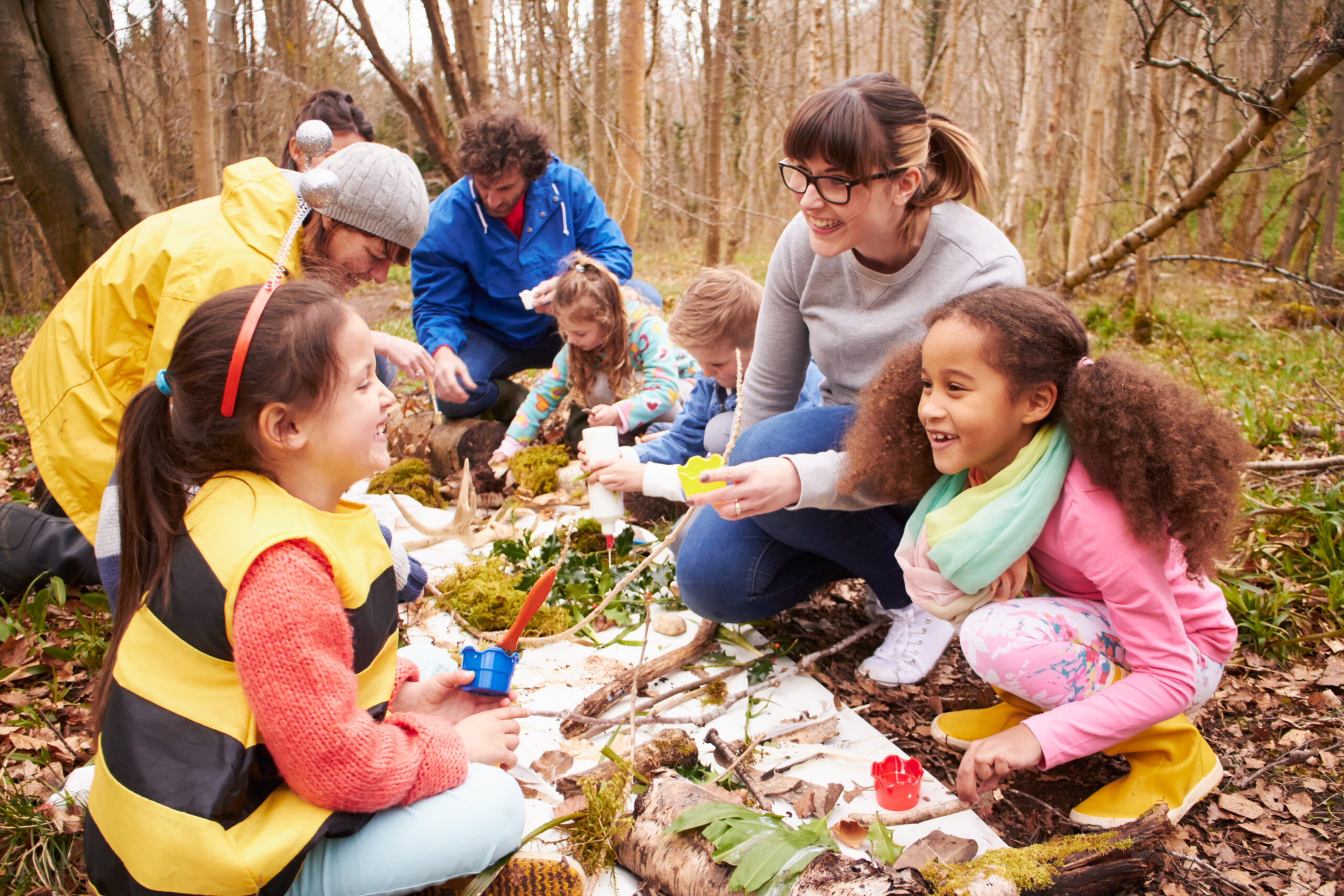10 Teaching Tips for Homeschooling Elementary School
For more information focused on learning theory and cognitive science, check out Blair’s article, Homeschooling Elementary School.
Tip #1: Work with learners at their level: To meet the needs of the individual, you should meet them where they are. For example, I have a grandson in 2nd grade and a granddaughter, his cousin, in 3rd grade. Math comes easily for him, but not for her.
You can check out how I work with him here.
When I work with her, instruction is focused less on the step-by-step process and more on direct problem solving. Where my grandson looks at 68 + 17 and knows the answer right away, my granddaughter struggles to come up with the answer without manipulatives. (Unfortunately, no one realized she needed these until I started working with her.) My grandson does sometimes draw diagrams, but he has never needed manipulatives. The introduction of manipulatives into math for my granddaughter took her from a struggling math student to one who is beginning to comfortably complete her math homework.
You might be wondering how to figure out their level. If in doubt, I recommend a MAP test or something similar. It is an adaptive assessment that measures where your student is in math, reading, language usage, and science. The test also provides detailed, actionable data about what a child should be working on.
One of the most important things you can do for elementary learners is to take the time to get to know how they learn. Slow down if you need to. Even if that means slowing the scheduling and pacing of lessons. Once you figure out how your children access and process information, their academic work will speed up.
Tip #2: Scaffold learning: Scaffolding is an important part of meeting learners where they are. The amount of scaffolding and support each student needs will vary. It is important to provide the support and guidance a learner needs. I know that sometimes it can feel like a time suck, but you will be able to gradually reduce the level of support as they become more proficient.
Tip #3: Keep it positive: Some days, this is easier said than done! I will admit to taking a “vacation” day now and then when I reached frustration overload. The issue is that a nurturing culture of thinking is most likely to evolve in a positive and supportive learning environment. If patience is a virtue you struggle with, it is probably a skill to work on mastering as your children work to master academic concepts.
Tip #4: Make learning fun and engaging: Elementary-aged students are more likely to learn and remember information if they are engaged in fun and interesting activities. When students are enjoying themselves, they are more likely to be motivated to pay attention and participate in class. When learners are engaged, it makes what they are learning more memorable. And hey, you are involved in their learning! You will enjoy teaching more when learning is fun and engaging.
Tip #5: Social and emotional learning: The brain regions responsible for social cognition and understanding others’ perspectives develop rapidly for this age cohort. This is essential for developing social skills, empathy, and an understanding of social norms and relationships. As with all learning, the teaching you get around these is important. Social and emotional learning can benefit children’s ability to communicate effectively and build positive relationships with others.

Tip #6: Diversity matters: Using diverse resources in elementary school is important. Especially with homeschool kids, most of us live in a small community of people with whom we interact. It is important, as our kids are beginning to make sense of the world, that we expose them to different perspectives and cultures. This can help them develop empathy and tolerance for others. It can also help them learn about the world around them in a more nuanced way.
A few examples of how you can include diverse resources are to ask in the SEA group for diverse resources, look for curriculum that positively portrays people in marginalized communities in positive ways, and use first-person, own-voice resources.
Tip #7: Critical thinking: In a world absolutely full of adults who do not have adequate critical thinking skills, do not assume your children acquire them without intentional teaching. It turns out that elementary school is the perfect time to begin teaching these skills. Starting at about age six, children begin to transition from preoperational thinking to concrete operational thinking. This means that they can think more logically and systematically about the world around them. With intentional teaching, they are better equipped to analyze information and make logical connections when forming conclusions.
Tip #8: Let them move: Every ten to fifteen minutes, when I taught live online science classes to elementary learners, I had the class get up and move. I would tell students things like, “We have been sitting long enough. Let’s prove that Earth’s gravity is still working.” Or, “What do you think will happen to your breathing rate if you do ten jumping jacks?” We would jump up and down, or do jumping jacks, and then get right back to our lesson, which sometimes related to the activity but often didn’t.
The kids loved it. They probably thought it was for fun. My real reason was to keep their brains engaged and focused. I was familiar with cognitive learning theory and what it has to say about the connection between attention and movement. According to the theory (and my observations while teaching), when students are physically active, their brains are more alert and engaged. This can help them learn and retain information more effectively. Movement also helps to improve memory. When students learn new concepts or skills while moving, they are more likely to remember them. This is because movement helps to create new neural pathways in the brain, a key component of learning. Movement also releases endorphins, which have mood-boosting and stress-reducing effects. This also helps with focus and attention.
It is not just jumping jacks and proving gravity works that benefit from movement. Pairing active, hands-on work with learning benefits the acquisition of that information. For example, when hands-on work is paired with science, students are much more likely to master concepts than if all learning is done watching a video or reading a chapter.
Tip #9: Organization is important: I have bad news for those of you who function best with chaos. Being organized and prepared will help immensely when homeschooling. Some children need organization and a schedule to succeed. I recommend having a schedule that you stick to within reason. (You are a homeschooler, after all!)
As a part of this organization, have clear expectations for what you expect in terms of academic performance. Be clear about these and communicate them to your children. You will also want to be organized when it comes to record-keeping. Even if you are not required to keep records, you will be glad you did when you want to evaluate the progress your learner is making.
Tip #10: Evaluations: Students need feedback on their work to learn and grow. If you have never taught before, you might struggle with feedback in the form of evaluations. A good starting point is to reflect on the purpose of evaluations. My personal philosophy is that evaluations should nurture students, helping them to see themselves as learners while at the same time helping them grow. That sentence sounds lovely, at least to me. The problem is, it can be challenging to give feedback that helps someone grow. To do that, you are going to have to point out the academic areas that they need to work on.
My recommendation is that you start with the positives. Make those genuine. Next, pick 123 things that your student should work on next. I feel that three is the maximum number of new skills for someone to be working on at any given time. More than that is overwhelming, and while you can lightly touch on more than three, it’s unlikely that mastery of them will happen with more than three.
Pay attention to improvements in what they’re working on. Give concrete scaffolding help until there is mastery of a skill. Then you can add the next one to three skills. Be very positive when there is improvement. Be careful; a mistake that is easy to make is to see a little bit of improvement and then stop paying attention. Don’t do that until you feel there is a mastery of the skill.
This is part of a series from Blair Lee. Check out the SEA Homeschoolers Magazine and SEA Homeschoolers Online Conference Series to review what neuroscience tells us about learning in the middle school years.
New to Homeschooling? Check out our How to Homeschool 101 Article.
For more information focused on learning theory and cognitive science, check out Blair’s article, Homeschooling Elementary School.

